- Blog
- Will Used Car Prices Drop In 2025 in the EU?
Will Used Car Prices Drop In 2025 in the EU?
Discover the used car prices 2025 forecast and learn how factors like supply, demand, and EU incentives will shape the future of the second-hand car market. Stay ahead with actionable insights for dealers!
About this article
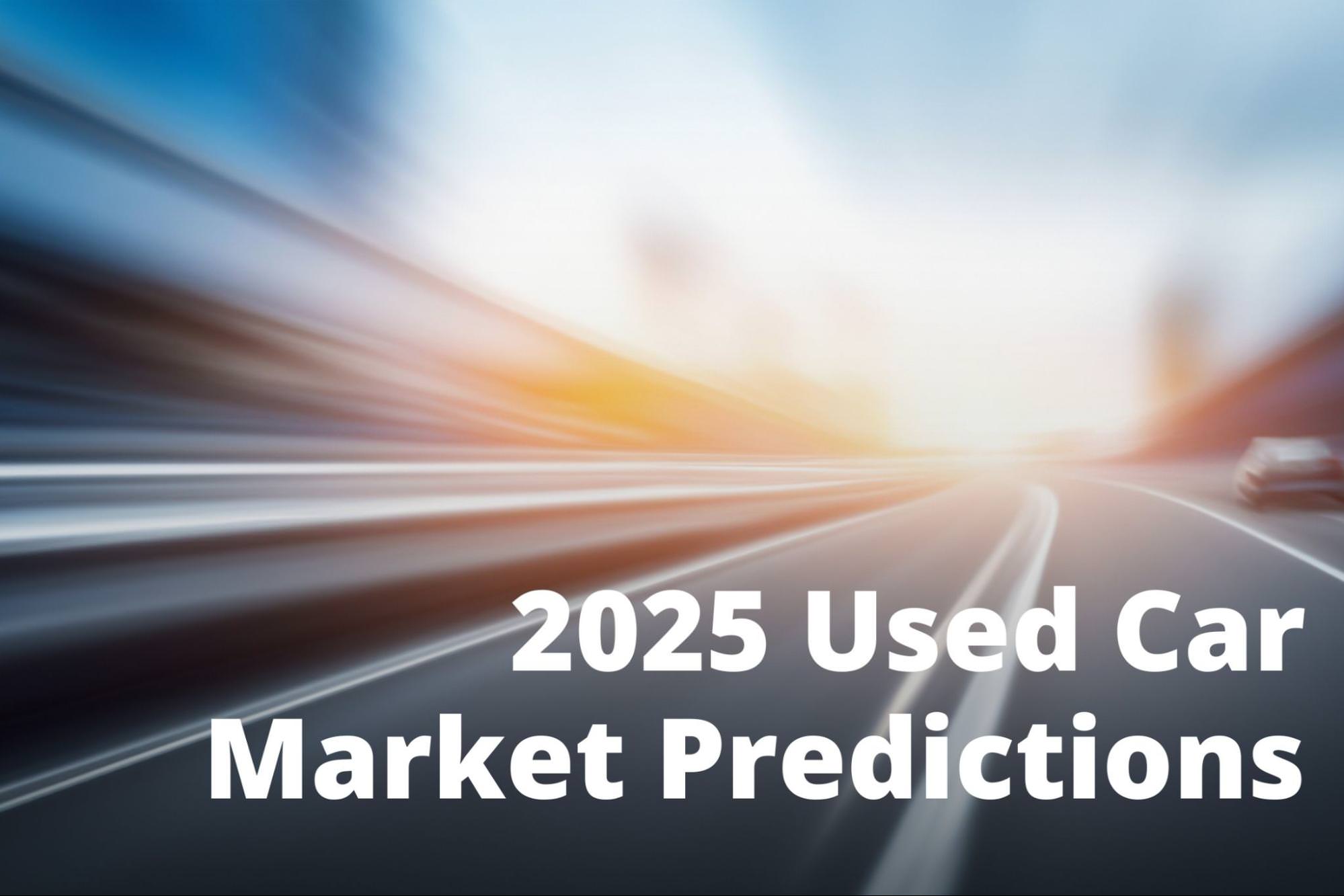
Key takeaways
- Used car prices in the EU have been slowly decreasing, with mixed results across different countries in 2024.
- EU-China trade duties on EVs may increase demand for used EVs, while increased ex-lease supply could lower prices.
- Customer preferences lean towards affordable, practical vehicles, but ICE cars remain popular in some regions.
- Monitor local market trends, leverage opportunities from lower prices, and adapt to potential pricing shifts.
- EU incentives for EVs contribute to a growing used EV supply, potentially further driving down used EV prices.
Used car prices have been slowly going down since COVID, even though there have been some occasional spikes.
However, this doesn’t mean the future of the used car market is unstable. On the contrary, the used car business is still full of opportunities to make a good profit.
Now that 2025 is here, it’s the perfect time to take a closer look at the factors shaping the market.
So, let’s check out what could impact second-hand car prices this year, see if customer preferences from 2024 are changing, and go over expert predictions for a few different scenarios.
Current used car market condition in the EU
Before we dive into car price predictions for 2025, let’s briefly review the current state of the market.
According to the Autovista data, major markets across the EU have seen mixed results in 2024. Germany saw steady growth, with used car sales rising by 4.6% in May. France saw a slight drop in used car prices, but more cars were sold, indicating buyer interest.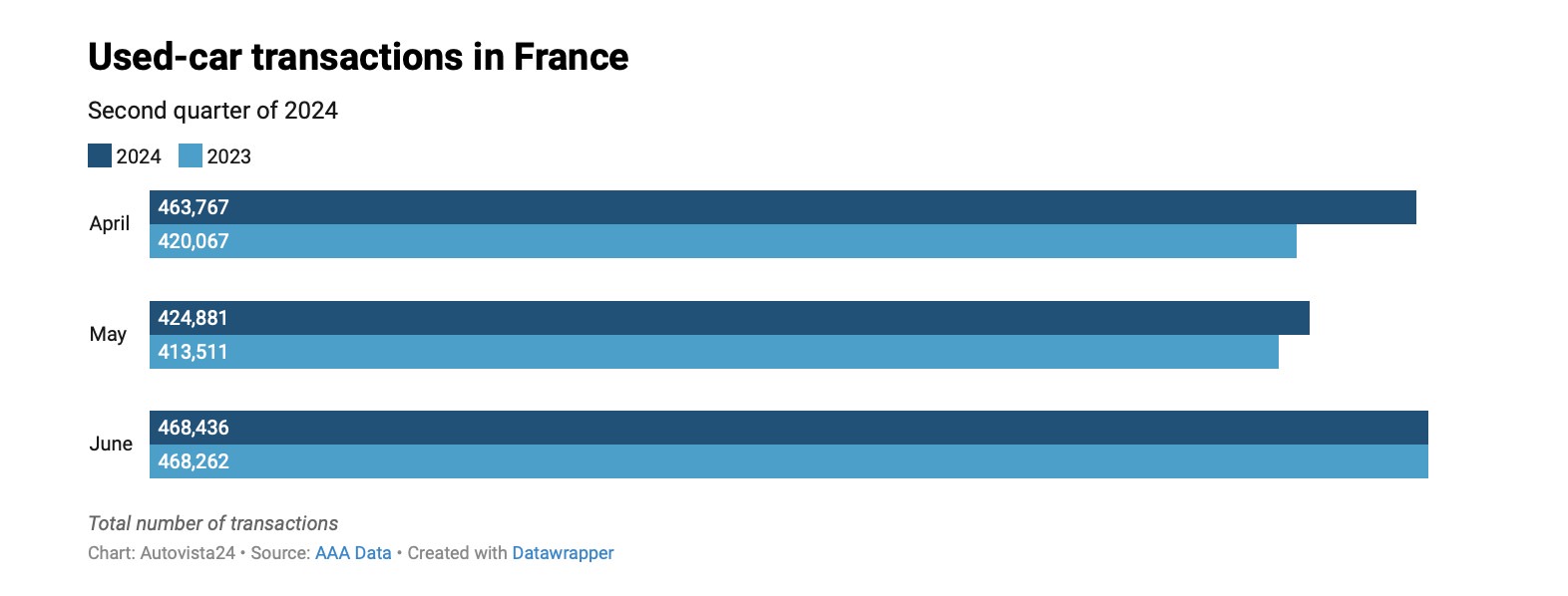
Image source: Autovista
In Spain, the market grew by 2.7% in the first quarter, though March sales dipped slightly because of seasonal factors like Easter.
Italy, on the other hand, had a tougher time. Sales were down by over 40% compared to the year before, but average prices went up, likely because fewer in-demand models were available.
As you can see, the market varied widely from country to country. But overall, we saw how resilient it remained to all the challenges.
What will influence second-hand car prices in 2025? Predictions
Whenever you notice a shifting trend in the market, you can be sure there’s an underlying factor driving the change. We’ve identified three key factors that are likely to impact second-hand car prices in 2025, and here’s what they are.
The EU and China trade
The EU ended 2024 with new duties on EVs imported from China over a period of five years. The duties were imposed to counter subsidies the Chinese government gives to its carmakers, which make their EVs cheaper and more competitive in Europe.
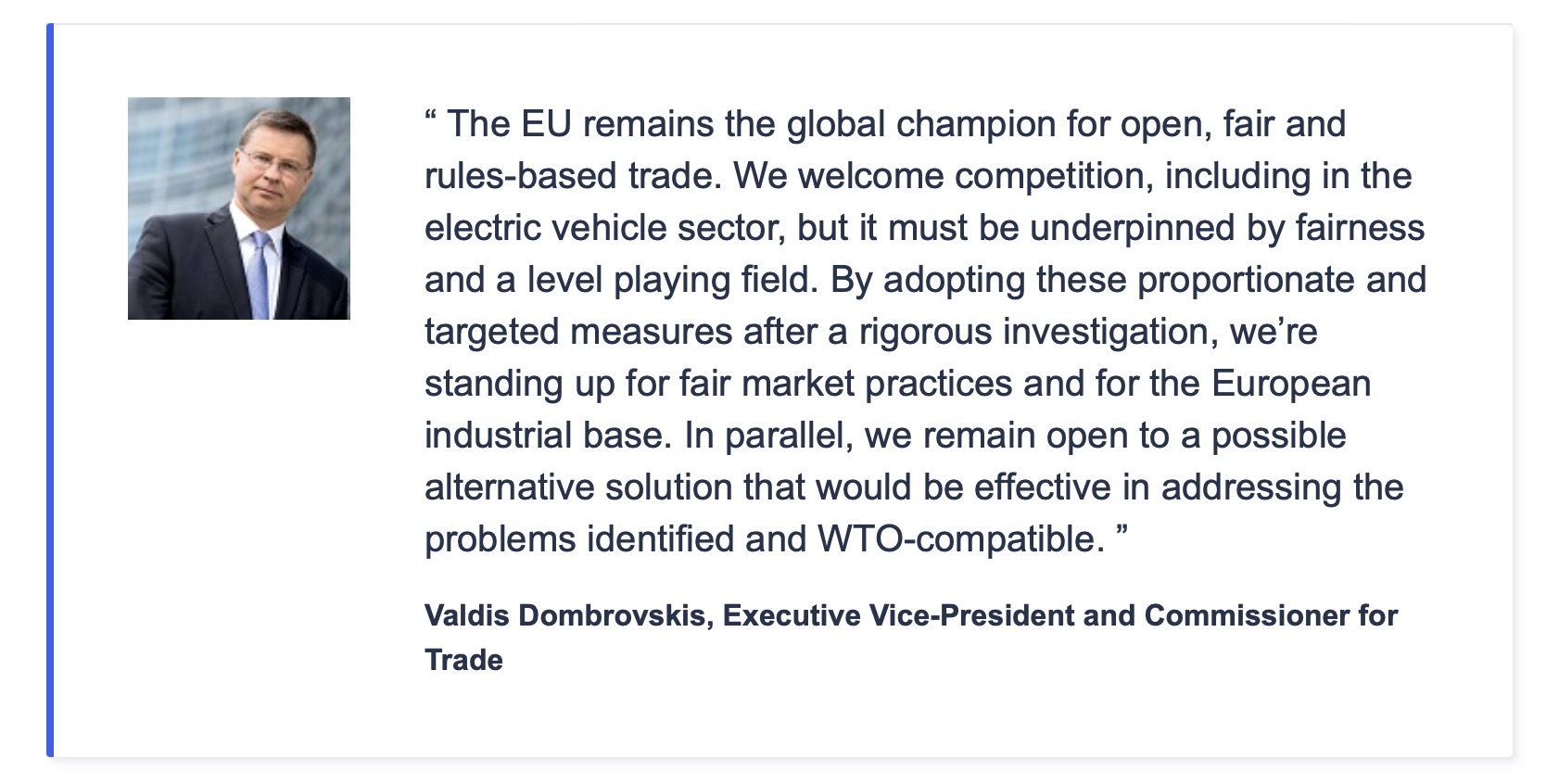
Image source: European Commission
Although the duties apply to new vehicles, they’re likely to affect the used car market as well. Higher prices for new Chinese EVs may push buyers to look for more affordable options in the second-hand market, increasing demand and potentially driving up prices for used EVs and other vehicles.
Supply chain issues
Global supply chain disruptions continue to impact the automotive industry. For instance, there’s still some semiconductor shortage, which is slowing down new car production. With fewer new cars available, more consumers are likely to rely on the used car market, and that could drive up demand.
Increased supply of ex-lease and fleet vehicles
One factor that could drive used car prices down in 2025 is the influx of ex-lease and fleet vehicles returning to the market.
Right now, in countries like Belgium and Germany, the majority of EV sales come from fleets.
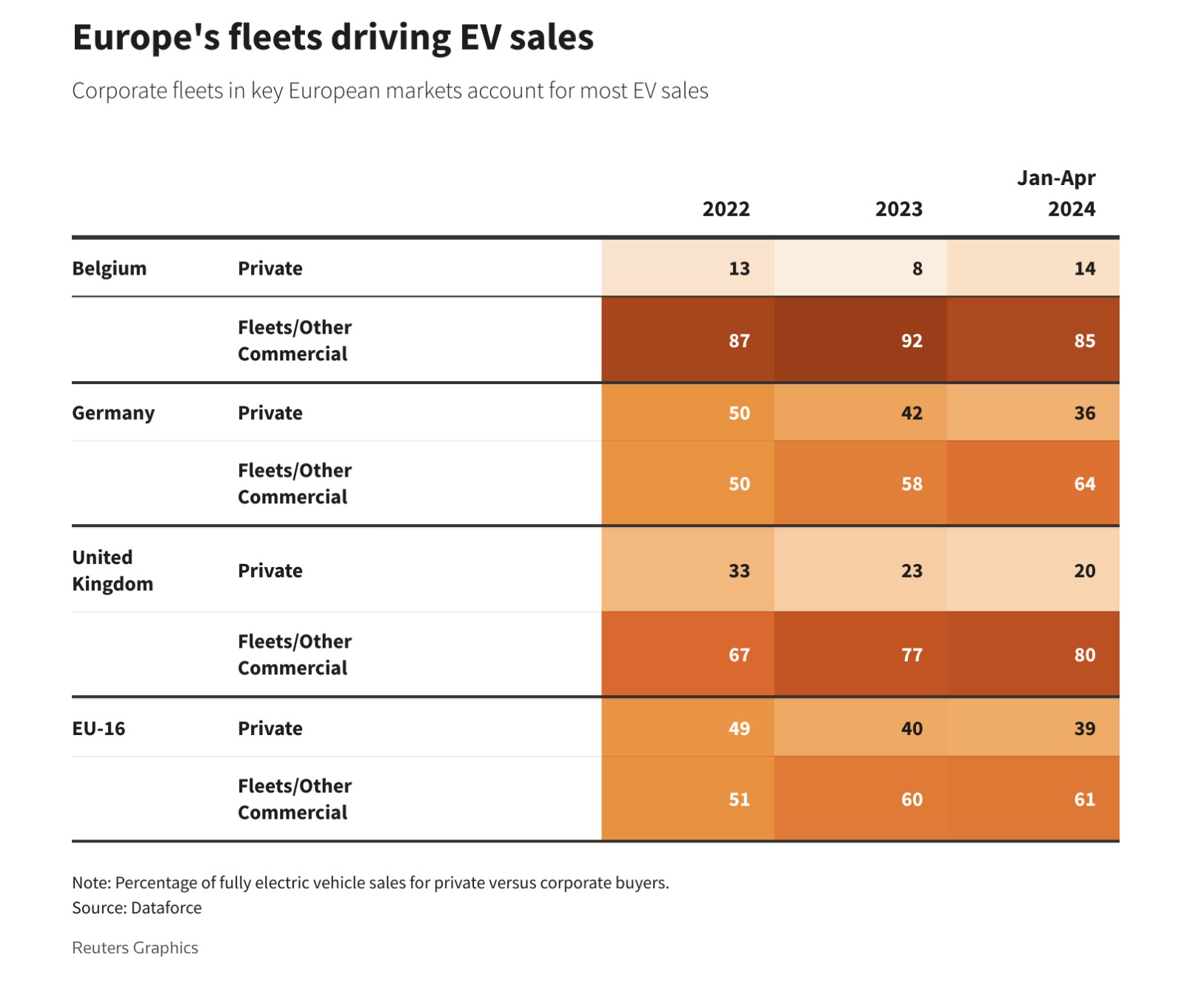
Image source: Reuters
This presents a new dynamic for the used car market. As the fleet supply increases, it could drive down prices for used EVs, especially as corporate buyers renew their fleets faster than expected.
For used car dealers, this trend might create more opportunities to stock relatively new EVs at competitive prices.
Customer preferences in 2024 - will they change in 2025
Based on our list of top 10 best-selling used cars in 2024, buyers leaned heavily towards:
- Affordability
- Practicality
- Efficiency
SUVs and compact cars have remained popular choices, and many customers have opted for hybrid and smaller EV models as a cost-saving measure. In fact, rising energy prices and growing sustainability concerns are likely to continue pushing buyers toward electric and hybrid options throughout 2025.
Still, let’s not write off internal combustion engine (ICE) vehicles just yet. Buyers might prioritize such used cars in areas where charging infrastructure is still underdeveloped.
In fact, if you take a look at 2024 European bestsellers, you’ll notice a strong presence of petrol and diesel vehicles among them.
- Volvo XC60: Petrol, diesel, hybrid
- Mercedes A180: Petrol, diesel
- Peugeot 3008: Petrol, diesel, hybrid
- Peugeot 308: Petrol, diesel
- Peugeot 2008: Petrol, diesel, electric
- Renault Clio: Petrol, diesel
- Renault Captur: Petrol, diesel, hybrid
- Toyota Yaris: Petrol, hybrid
- Volkswagen Golf: Petrol, diesel, hybrid
- Ford Fiesta: Petrol, diesel
So, before you make any big decisions, it’s a good idea to check out local buyer preferences in your area. Understanding what your customers are looking for will help you stock the right inventory and stay competitive.
Expert predictions for used car prices in 2025
Alright, based on all these factors and shifts, what does 2025 have in store for used car dealers?
Generally, while some segments (like EVs) might see a price drop due to increased supply, the overall used car market likely won’t see an overly significant drop in prices.
Thanks to expert analyses and detailed market insights, we can take these predictions for second-hand car prices in Europe a step further and make them more precise.
Cox Automotive suggests that there are three possible scenarios in 2025, each of which paints a different picture for new car registrations and, in turn, the used car market.
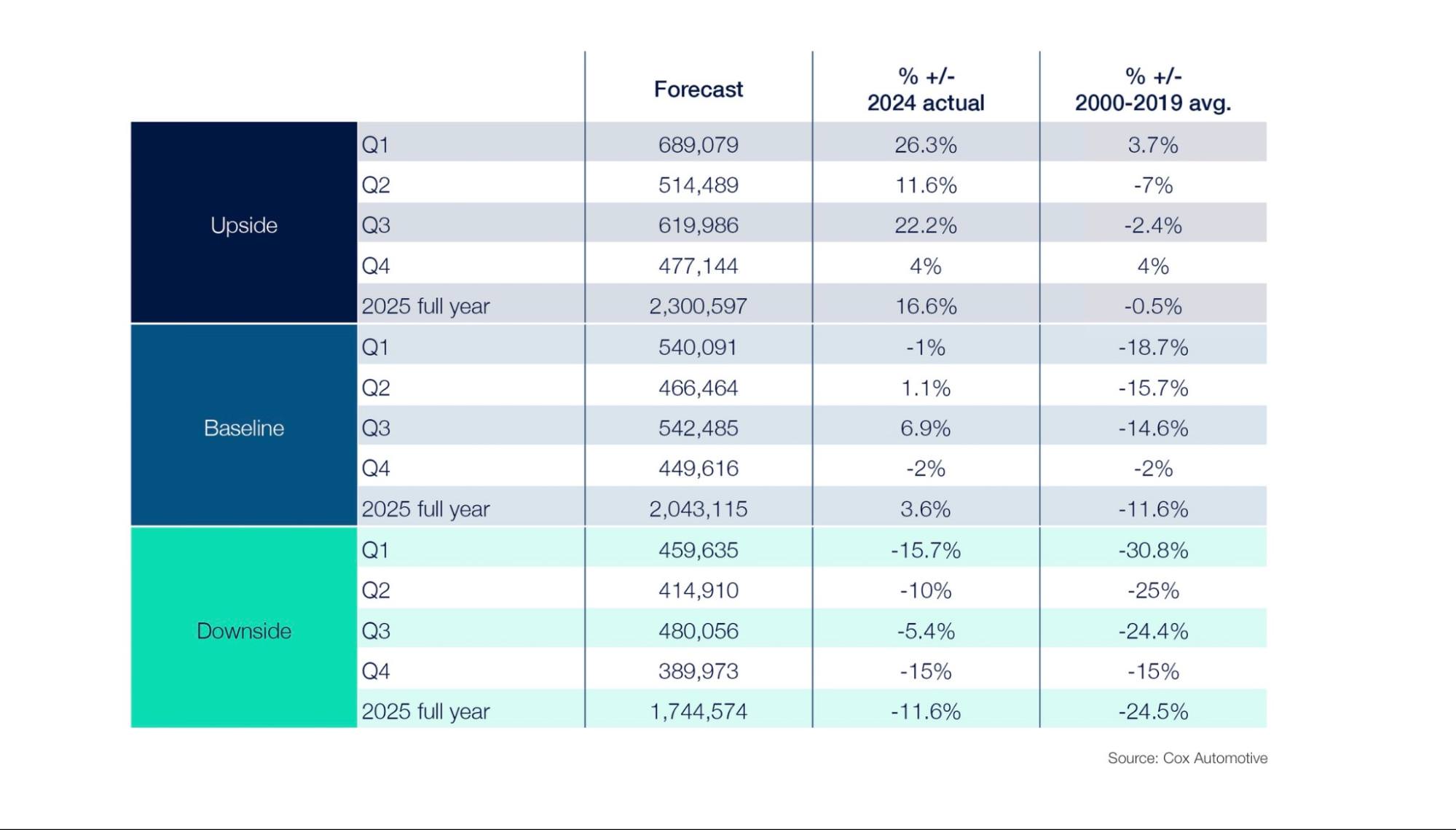
Image source: Cox Automotive
Let’s take a closer look at what you can expect in each case.
► Upside scenario
If this optimistic outlook comes true, the economic recovery will encourage buyers to spend more, boosting demand for both new and used cars. Manufacturers might also ramp up production, which means more new cars on the road and more trade-ins entering the used market.
A strong growth in Q1 (+26.3%) and Q3 (+22.2%) could lead to an improved supply of used cars.
With more used cars available, prices may stabilize or experience slight declines, offering better deals for buyers.
► Baseline scenario
The baseline scenario predicts a slight increase of 3.6% in new registrations compared to 2024, but that’s still 11.6% below the 2000–2019 average.
A steady but slow recovery means demand for used cars will remain stable. Prices likely won’t fluctuate much, meaning that you won’t have to change your current pricing strategies too much.
And since this scenario anticipates a balance between supply and demand, it suggests a relatively stable market where dealers can continue to operate without inventory shortages.
► Downside scenario
Lastly, there’s a less favorable scenario where economic challenges continue to happen. More precisely, Cox Automotive predicts 1,744,574 new car registrations in 2025, which is 11.6% lower than 2024.
To put it simply, reduced consumer spending and lower demand could leave more stock on dealer lots.
If this happens, offering affordable options and creative financing could be the key to keeping sales moving.
Used electric vehicle prices in 2025 - eCarsTrade forecast
While the share of EVs on the market has been increasing over the years, the EV market is still playing by its own rules. We’ve prepared a brief forecast specifically for used EV prices so that you can better understand what to expect in 2025.
In 2024, the European EV market experienced a slowdown, with new battery electric vehicle (BEV) registrations dropping by 6% compared to the previous year.
Still, certain regions like Spain have remained resilient, with EVs keeping around 49.5% of their original price, showing that demand varies across different markets.
Based on these trends and the fact that the influx of ex-lease vehicles is expected to increase the supply of used EVs, you could conclude that the prices of used EVs will go down further.
However, the impact of new EU duties on Chinese EV imports could influence new EV prices, indirectly affecting the used EV market.
So, when the time comes to stock your inventory, make sure you keep these factors in mind, along with the preferences for used EV models that are popular in your area.
New incentives for EVs in Europe
There’s another important factor worth considering when it comes to predicting if used EV prices will drop in 2025. We’re talking about incentives and subsidies that EU members continue to offer for buying electric vehicles.
You’ll find key incentive highlights by country below. If you want to learn more, this complete overview of tax benefits and incentives in 2025 for EVs has you covered.
- France: Subsidies for new EVs based on income, with exemptions from certain taxes for qualifying vehicles.
- Germany: Tax benefits aimed at reducing the financial burden of owning EVs.
- Belgium: Regional incentives like grants and tax reductions.
- Spain: Subsidies for EV purchases and investments in charging infrastructure.
- Netherlands: Various financial incentives to make EVs more affordable.
While most of these measures refer to new EVs, they contribute to the supply of used EVs when these cars are later traded, sold, or leased out, potentially driving prices down further.
2025 will be a good year for dealers sourcing on eCarsTrade
Let’s review the key points:
- 2024 saw a drop in used car prices in Europe.
- Customers still prioritize affordable and practical vehicles, meaning there’s a strong demand for reliable, everyday models.
- EU incentives for electric vehicles continue to encourage EV adoption.
All things considered, 2025 is looking promising for used car traders to take advantage of favorable market conditions.
However, it’s worth keeping in mind that supply chain challenges could affect the availability of some models, and EU-China trade tensions might create slight pricing shifts, particularly for EVs.
To stay ahead regardless of the market challenges, consider sourcing cars for your dealership on eCarsTrade. Our platform offers quality ex-lease vehicles that you can bid on and buy at competitive deals, helping you stock your lot quickly and reliably.
Just remember—the automotive industry has proven its resilience through the pandemic and beyond. Whatever 2025 brings, you’ll be prepared if you source your cars cleverly.
Recommendations and advice for used car dealers
Lastly, we’re sending you off to a successful 2025 with a few actionable tips. Here’s what you can do to stay flexible and proactive.
- Keep an eye on local trends: Understand what your customers want, and stock accordingly.
- Take advantage of market conditions: Lower used car prices could give you the chance to expand your inventory at competitive rates.
- Choose reliable partners: Use eCarsTrade to source quality vehicles quickly and reliably, ensuring your lot is always stocked.
- Be ready to adapt: Monitor supply chain developments and EU regulations to stay ahead of potential pricing or inventory shifts.
By staying informed and sourcing strategically, you’ll be able to make the most of what 2025 has to offer.
eCarsTrade is not just an online auction platform - we are also a valuable resource for car dealers and traders. Our blog offers expert advice on various topics, including:

